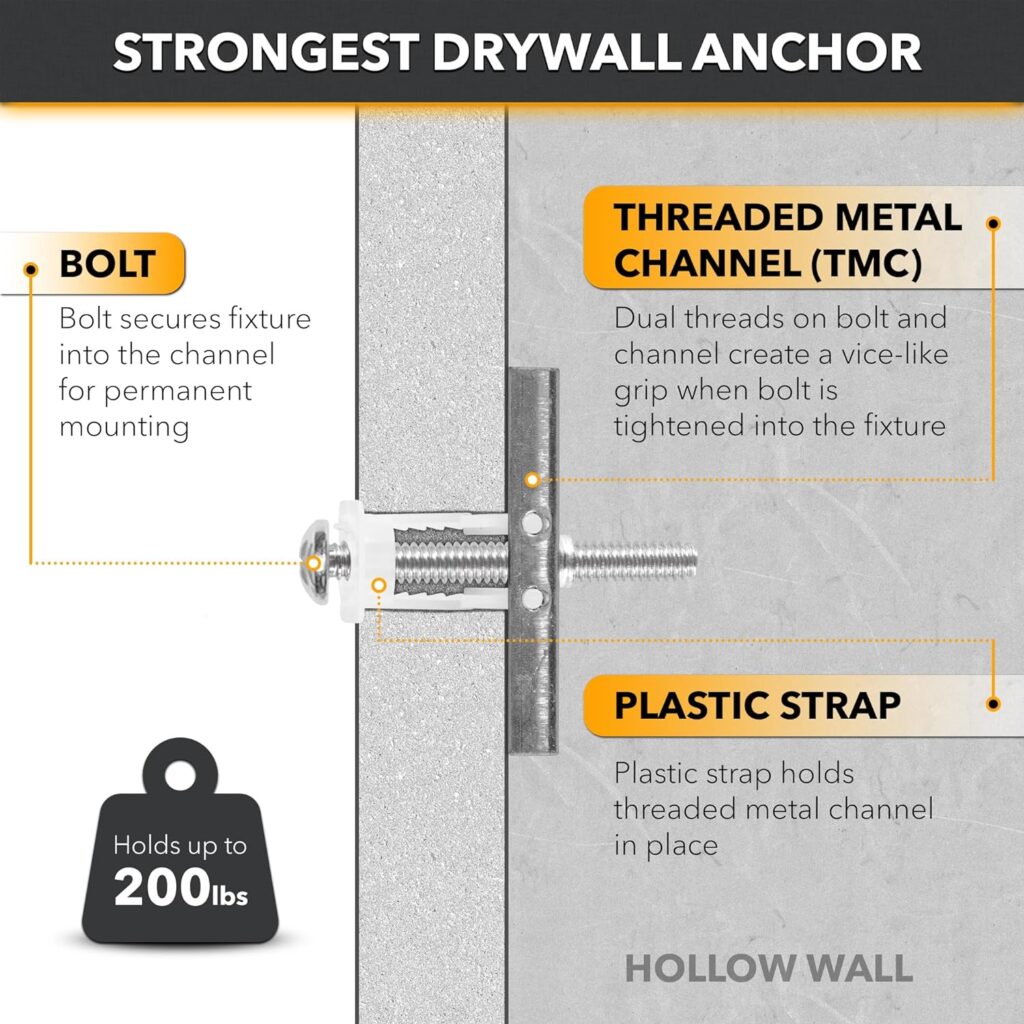Using the right drill bit


When it comes to wall mounting, using the correct drill bit is critical for ensuring a secure, professional finish. The success of your project, whether mounting a TV, shelves, or any other fixture, depends largely on selecting the right tools. One of the most essential tools in your kit is the drill bit. But why is choosing the correct drill bit so important, and how do you ensure you’ve picked the right one?

Drilling holes may seem like a simple task, but different materials react differently to drilling. Using the wrong drill bit can lead to several issues, including:
Choosing the right drill bit prevents these issues and guarantees that your Elephant Anchors are installed securely, allowing them to perform their job optimally.
Here’s a quick overview of common drill bit types and their uses:
Masonry Bits:
These are designed specifically for drilling into tough materials like brick, concrete, or stone. Their carbide tip makes them capable of handling the resistance from these surfaces.
Wood Bits:
These bits have a pointed tip to start drilling precisely on wood surfaces without slipping. They create clean, smooth holes perfect for wood installations.
Metal Bits (High-Speed Steel):
These drill bits are designed to penetrate metal surfaces and are often coated with titanium or cobalt to handle tough jobs like drilling through steel.
Tile/Glass Bits:
These bits have a spear-like tip and are specifically designed to drill through hard, brittle materials like tile or glass without cracking.
Each drill bit is crafted with a specific material in mind, ensuring precision and reducing wear on the bit and your project surface.

Elephant Anchors are designed to provide strong support in materials like drywall, concrete, and brick. Choosing the right drill bit is essential for a secure installation. Here’s how to select the correct bit:
Check the Material:
First, determine what material you’re drilling into. Are you mounting on drywall, brick, or concrete? This will guide your bit selection. For drywall, a standard twist bit works perfectly. For brick or concrete, you’ll need a masonry bit to handle the dense surface.
Match the Bit Size to the Anchor:
It’s critical to choose a drill bit size that matches the diameter of your Elephant Anchors. If the bit is too large, the anchor won’t hold securely. Too small, and the anchor won’t fit. Most anchor kits, like the Elephant Anchors 200lbs Metal Stud Mounting Kit, include a specific drill bit size recommendation, so follow those guidelines closely.
Use the Right Power Settings:
Besides selecting the correct drill bit, ensure your drill settings match the material. For harder surfaces like concrete, you may need to use a hammer drill setting for the masonry bit to be effective.
Choosing the correct drill bit isn’t just about completing your project quickly; it’s about ensuring a strong, secure hold for your Elephant Anchors. Using the right bit for the job will prevent damage to your walls, ensure a firm grip for your anchors, and save you time in the long run. Always check the material you’re drilling into, follow the size recommendations for your anchors, and make sure you have the proper bit in your toolkit. This attention to detail will guarantee your project’s success!
The 25 Elephant Anchors pack is the ultimate solution for DIY enthusiasts looking to mount heavy items on metal studs. Designed for strength and durability, these anchors support up to 200 lbs each, making them perfect for TVs, shelves, and more. Easy to install with no professional help needed, Elephant Anchors ensure secure, long-lasting mounting. With 25 anchors in each pack, you’ll have everything you need for multiple projects, making them an essential addition to any home DIY toolkit.
Learn how to set up your TV wall mount like a pro! Discover the versatility of Elephant Anchors for secure installations on metal stud walls or without studs. Elevate your space effortlessly with our easy-to-follow guide. Shop now for a hassle-free mounting experience!
Removing wall anchors without damaging drywall is possible with the right approach. Start by identifying the type of anchor—plastic, threaded, toggle, or molly—and use specific techniques like gentle pulling with pliers, unscrewing, or drilling for heavier-duty anchors. Always work slowly, applying even pressure to prevent tearing or cracking. Once removed, patch and sand the hole for a clean finish. With patience, you’ll keep your walls smooth and damage-free!